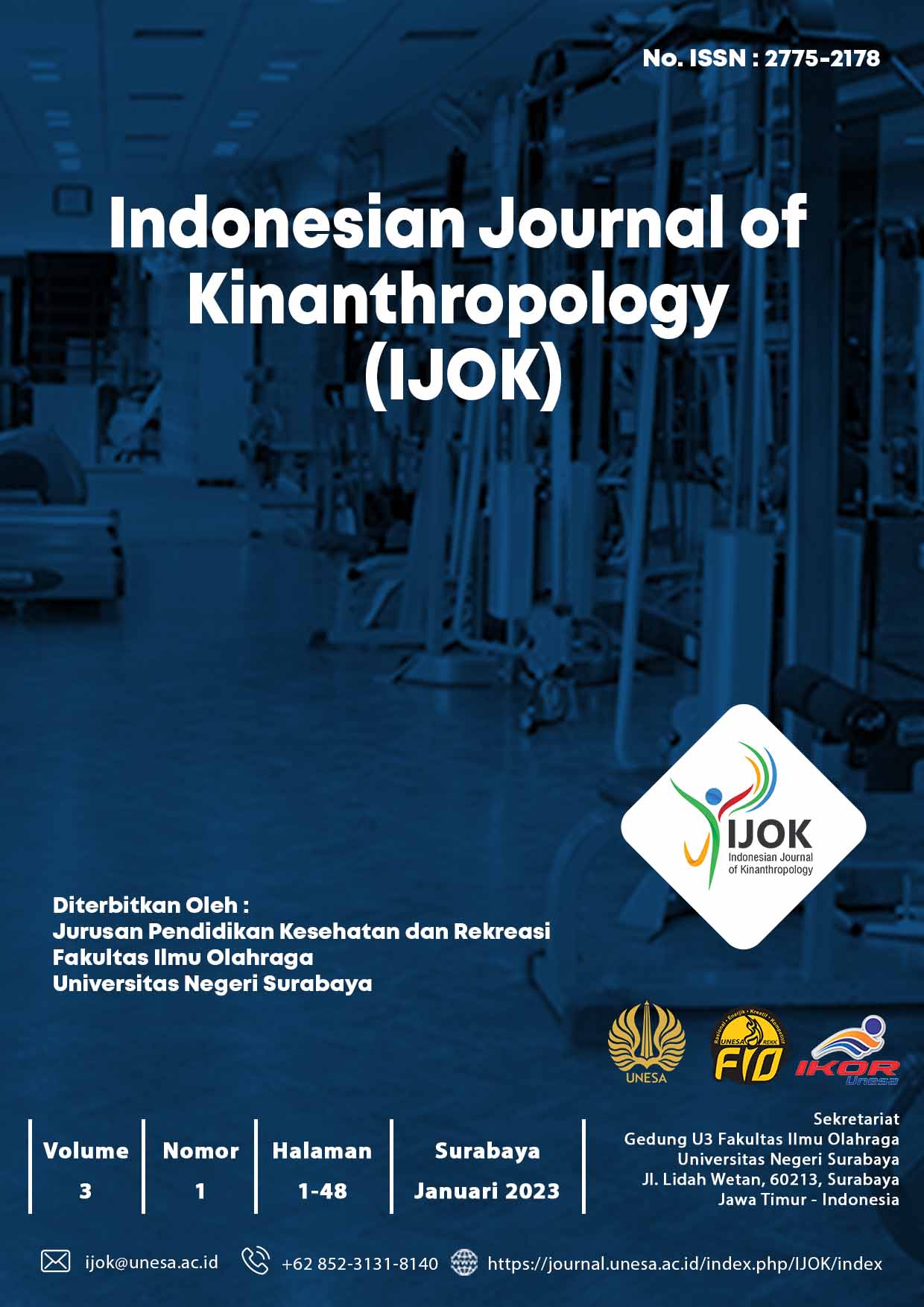Analysis Of The Minimum Standing Board Jump Standard For The Selection Of Male Volleyball Athletes Aged 17-21 Years
DOI:
https://doi.org/10.26740/ijok.v3n1.p20-27Keywords:
volleyball athletes; standing board jump test; age 17-21 yearsAbstract
Background: In this study the scope and objectives were to determine the leg muscle strength of volleyball athletes, the magnitude of the leg muscle values ??of national team athletes, to find out the standard size scale used to select male volleyball athletes who will compete aged 17-21 years.
Methods: This study used a qualitative descriptive method which was carried out using a standing board jump test without a prefix and the subjects were 23 volleyball athletes in Gresik Regency.
Results: It was found that the selected volleyball athlete candidates must have a minimum explosive power value or leg muscle explosive power as measured by the standing board jump test = 2.35 m and have a height = 1.88 m and still be at least 17 years old and a maximum of 21 years, then the player is an ideal volleyball player candidate. By having a composition of explosive power values ??or limb muscle explosive power as measured by the standing board jump test = 2.35 m and having a height = 1.88 m, it is hoped that these prospective players will also have high achievements like volleyball players who are members of the Volleyball Team. The Indonesian National who won the gold medal at the Sea Games in Vietnam in 2021, namely = 3.32 m, so that he will be able to do the best smash and block techniques. Furthermore, at that age, he is still able to achieve his best performance at the golden age of approximately 25 years.
Conclusion: Knowing that athletes who can be included in the ranks of core players is the result of selection with standards that can be accounted for based on existing data so that players are expected to win the league they will participate in.
References
Arikunto, S. (2013). Prosedur Penelitian Suatu Pendekatan Praktik. Retrieved from http://r2kn.litbang.kemkes.go.id:8080/handle/123456789/62880
Arlidas, A. (2019). Kontribusi Daya Ledak Otot Tungkai, Daya Ledak otot Lengan dan Kelentukan Pinggang Terhadap Kemampuan Smash Atlet Bolavoli Kecamatan Sangir Jujuan Kabupaten Solok Selatan.
Astuti, S. I., Arso, S. P., & Wigati, P. A. (2020). Pembelajaran Bola Voli. In Analisis Standar Pelayanan Minimal Pada Instalasi Rawat Jalan di RSUD Kota Semarang (Vol. 3).
Winarno, W., Tomi, A., Sugiono, I., & Shandy, D. (2013). Teknik Dasar Bermain Bolavoli.
Downloads
Published
How to Cite
Issue
Section
License
Copyright (c) 2023 Indonesian Journal of Kinanthropology (IJOK)

This work is licensed under a Creative Commons Attribution-ShareAlike 4.0 International License.
Please find rights and licenses inIndonesian Journal of Kinanthropology (IJOK). By submitting articles/ article manuscripts, the author agrees to this policy. No special documents required.
The copyright of the received article once accepted for publication shall be assigned to the journal as the publisher of the journal. The intended copyright includes the right to publish the article in various forms (including reprints). The journal maintains the publishing rights to the published articles.
 Abstract views: 448
,
Abstract views: 448
, PDF Downloads: 390
,
PDF Downloads: 390
, PDF Downloads: 95
PDF Downloads: 95




